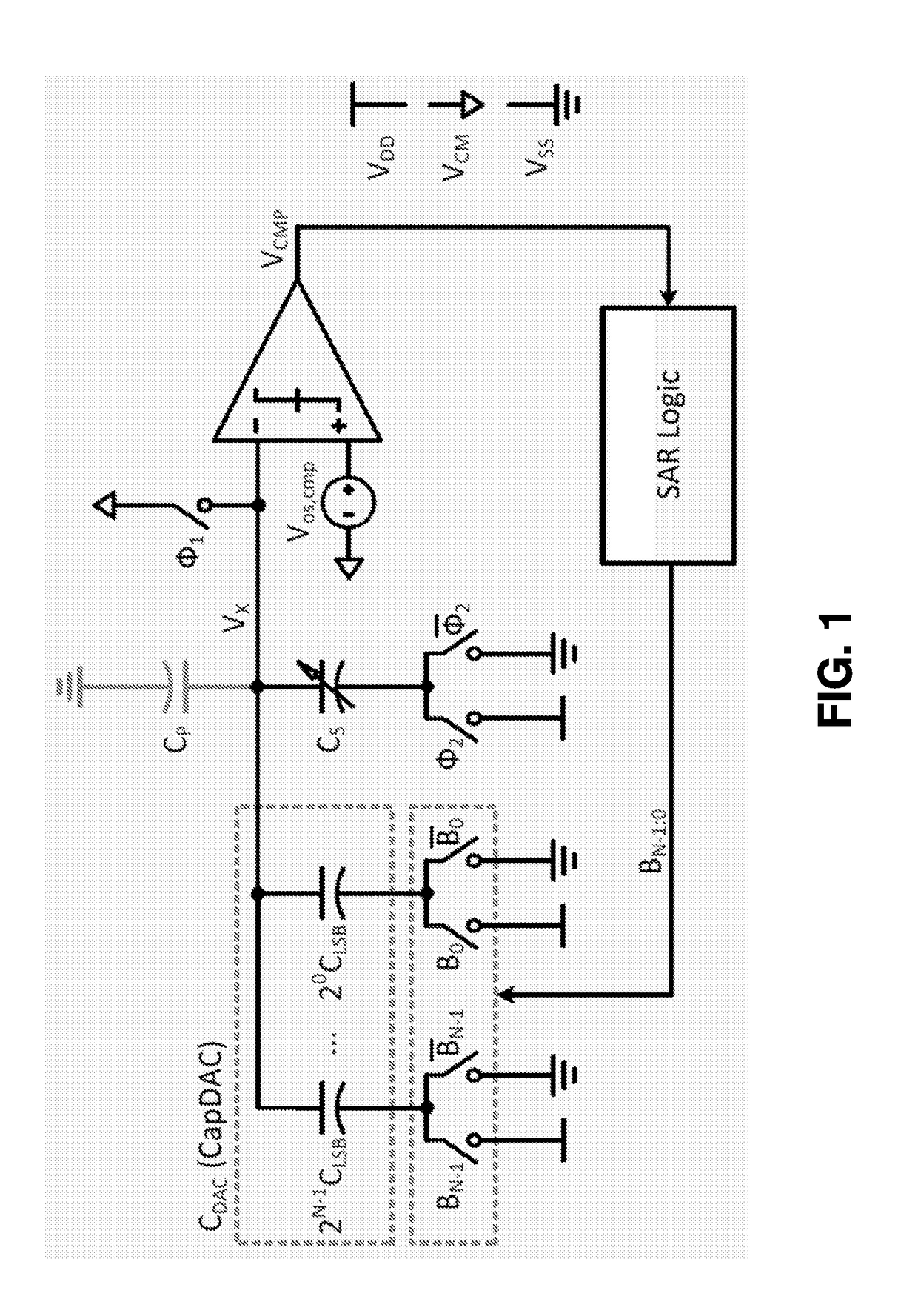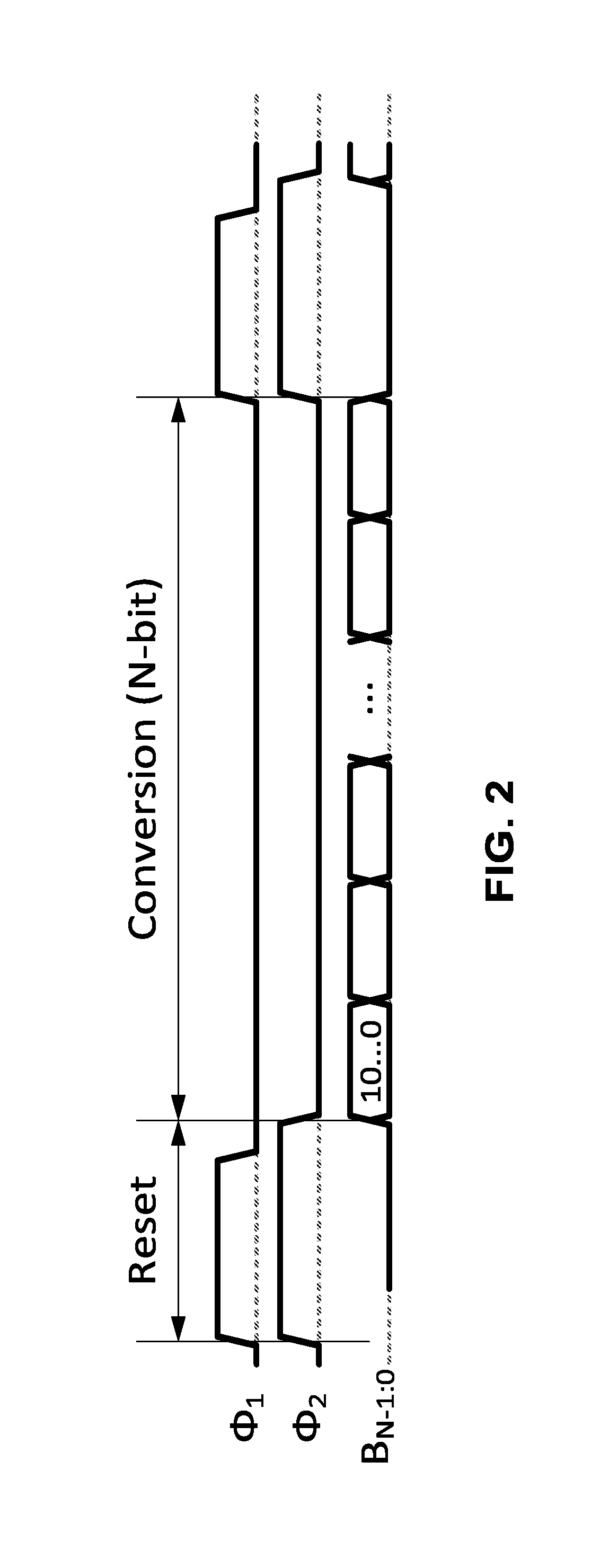Inverter-based successive approximation capacitance-to-digital converter
a capacitance-to-digital converter and successive approximation technology, applied in the direction of capacitance measurement, power saving provisions, instruments, etc., can solve the problems of parasitic dependency, poor resolution, and only operating the wireless transceiver, so as to avoid signal-dependent conversion errors, parasitic dependency, and poor resolution. , the effect of minimizing energy consumption
- Summary
- Abstract
- Description
- Claims
- Application Information
AI Technical Summary
Benefits of technology
Problems solved by technology
Method used
Image
Examples
Embodiment Construction
[0092]Some embodiments of the present invention will now be described more fully hereinafter with reference to the accompanying drawings, in which some, but not all embodiments of the inventions are shown. Indeed, these inventions may be embodied in many different forms and should not be construed as limited to the embodiments set forth herein; rather, these embodiments are provided so that this disclosure will satisfy applicable legal requirements. Like numbers refer to like elements throughout.
[0093]The description below is organized as follows. First, an analysis is provided of the limitations of op-amp-less SAR CDCs, including a discussion of the requirements and trade-offs of op-amp-based SAR CDCs. Subsequently, a description of the operation of example embodiments of the contemplated inverter-based SAR CDC is provided. Thereafter, a discussion is provided of the maximum achievable resolution due to mismatch and the implementation of a hybrid course-fine capacitive digital-to-a...
PUM
 Login to View More
Login to View More Abstract
Description
Claims
Application Information
 Login to View More
Login to View More - R&D
- Intellectual Property
- Life Sciences
- Materials
- Tech Scout
- Unparalleled Data Quality
- Higher Quality Content
- 60% Fewer Hallucinations
Browse by: Latest US Patents, China's latest patents, Technical Efficacy Thesaurus, Application Domain, Technology Topic, Popular Technical Reports.
© 2025 PatSnap. All rights reserved.Legal|Privacy policy|Modern Slavery Act Transparency Statement|Sitemap|About US| Contact US: help@patsnap.com



